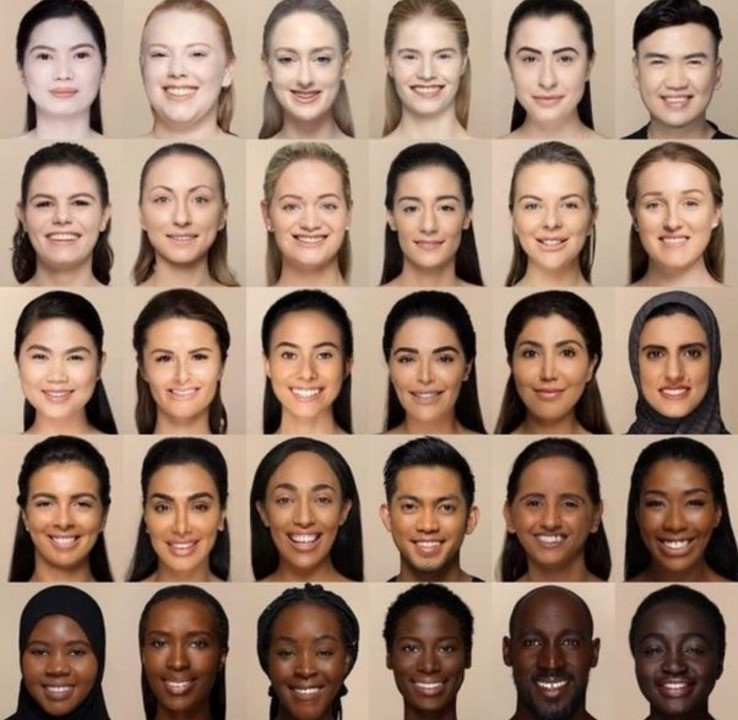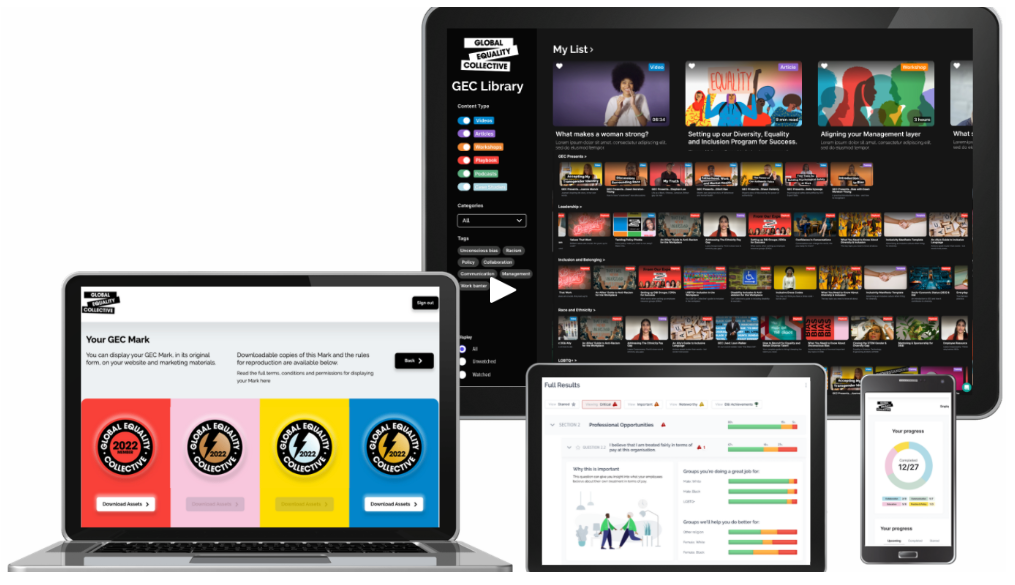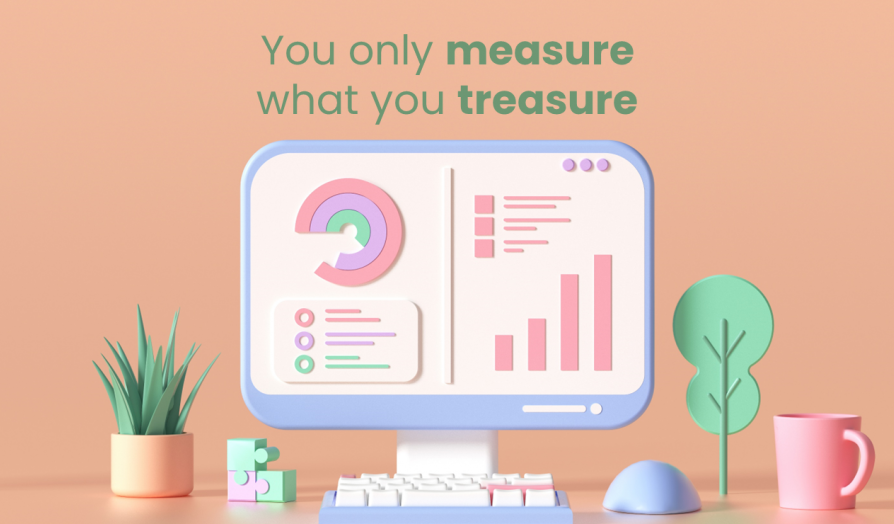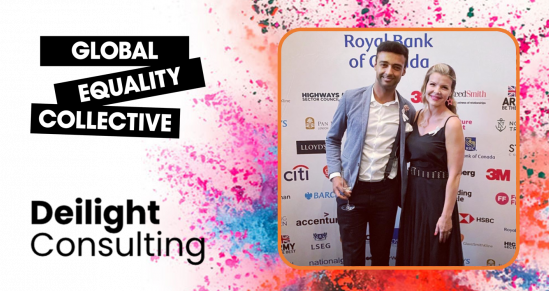It's the age old problem. 'Everything's just fine at our firm, so we don't need to collect any data about the identity of our staff'. Imagine, if we had the same approach to our bank accounts. Let's be honest, we don't collect demographic data because we're afraid of what it might tell us about our own identity. After all, ignorance is bliss. But just like with bank accounts, unless you understand where you're at, there's no way you can make informed strategic decision about where you're going.
Here, I did a deep dive into the challenges and solutions to D&I Data Dilemma.
Step 1: Understand why you're doing it
From our height to our handprint, every Human possesses near infinite differences to the next. That's especially true when you look beneath the surface, beyond the superficial things like gender, race, age and sexuality. These forms of extrinsic differences have absolutely no bearing on our behaviour or our capability (as proven by the Human Genome Project, 2003).
The real things that set us apart from each other in terms of the value we can generate for organisations are the traits that fundamentally define and drive our behaviour and capability. But these can only be found within - intrinsic uniqueness. Things like our charisma, the levels of knowledge we possess, our ability to listen, whether we have a positive or negative disposition, or a sense of humour.
Particularly in this Industry 4.0 age of automation, it's our Uniqueness - not our Differences - that are valuable to companies and which will ensure we always have the upper hand over machines. But uniqueness is by its very definition impossible to put a value on, therefore it can't be measured. However we can measure differences in order to ensure that there is no systematic bias in the way we are filling our ranks. For more on 'the why' read our article '4 traps to avoid for an effective D&I data strategy'.
Step 2: Lay the ground work first
If people aren't on board, they won't provide the data. This usually manifests in two camps:
People from marginalised communities won't provide their data if they do not feel safe doing so. I once cancelled my membership of my former employers LGBTQ+ Staff Network because homophobia was rife and I didn't want anyone with access to my emails to be able to use my sexuality against me. Just a few weeks later, none other than boss himself chose to 'out' me in the open office in front of dozens of staff. That's why we designed a Safe Spaces training course, to help firms establish workplaces and sub-climates where employees feel able to be themselves without fear of oppression.
People from overrepresented communities won't provide their data if they feel the exercise goes against their interests. A consistent theme across firms and sectors is the lower response rates from senior white males. This isn't to single them out - they are behaving exactly as Humans do. We are, sadly somewhat inhumanely, scared of what conceding privilege today might mean for the distant future prospects of our unborn kin at the expense of our fellow Humans who are alive today. Yet we forget that when we allow intrinsic uniqueness to thrive within our firms - just like when we allowed women into the Houses of Parliament in 1920 - the fruits of our labour expand to the benefit of everyone. There are no losers from Equality, whereas today white men suffer the worst levels of suicide and mental illness because of the inequitable burden of expectation they face in overseeing this world we all share, at times without the intrinsic uniqueness needed for them to effectively do so. If you're having trouble communicating the rationale with purpose, we'd be Deilighted to record you a corporate video or attend a corporate event and make the case on your behalf.
Step 3: Decide what data you're going to collect
Today, Gender Pay Gap reports are mandatory for all firms with 250 staff or more. Ethnicity Pay Gap reports are recommended best practice under the Race at Work Charter but legislation fell short of making these a statutory requirement due to (at the time) concerns around worsening the impact of COVID with added disruptions.
We think this current piecemeal approach makes little sense and is doomed to failure. Because it doesn't take a holistic approach to measuring Extrinsic Differences, therefore it can't provide sufficient data to make an informed decision on whether Intrinsic Uniqueness is valued or not at any particular firm. These appear to be largely performative measures intended to boost the privilege of specific groups of marginalised people rather than deliver equality for everyone. By focusing exclusively on gender and (occasionally) race, we risk fueling tokenism, ambivalence and discrimination as we move privilege and oppression from one group to another.
If your goal is to identify and manage risk: The best approach will always be to collect data on all protected characteristics (ethnicity, age, gender, sexuality, disability/neurodiversity and religion) since the law recognises that oppression is highly active towards these particular traits.
If your goal is to boost performance: There are further metrics the law does not currently recognise which also experience significant hurdles to success, including people's hair colour, hair style, tattoos, piercings, height and weight. So if your goal is to complete the exercise Authentically and reach a true conclusion around the levels of oppression vs meritocracy in your organisation, it's time to start thinking outside the box. We can help you with that, just ask.
Step 4: Decide what to ask when collecting your data
Look at this picture and consider for a moment, how many races do you see?

The simple answer is also the correct answer. There is just one race - the Human Race. Skin colour is a spectrum, just like sexuality, age, gender identity (often mistaken for Masculinity vs Femininity), physical ability and (in most cases) neurodiversity. Humans love to put things in boxes, but we're far too complex beings for that. That's why the LGBTQQIIAAA+++ acronym keeps growing. Because we're trying to ascribe labels to every single notch on a continuous spectrum.
Today, every major industry body recommends collecting demographic data using labels. For example, the CIPD's list for race - often considered the gold standard - has recently been expanded to 19 separate qualitative data points. But we think differently to every major industry body today. For example, if you ask people if they're LGBTQ+ or not (a label), 1 in 20 will say yes (ONS, 2019). But if you ask if they've ever had some form of same sex attraction (a spectrum), that number more than triples to 1 in 6 (Gallup, 2021). Labels are just words, and different people have different definitions they abide by when using them. No word can ever be safe when describing the full richness and complexity of Human identity - except of course, 'Human'.
Our pioneering approach to gathering demographic data maximises uptake, minimises offence and provides the richest data possible for onwards modelling purposes. It involves a sliding scale from 0-100 for each key characteristic alongside photographs depicting either perceived extremity of the trait concerned. This allows people to place themselves comfortably and quickly without needing to fit their complicated character into a box they may not identify with as you believe they should.
Lastly remember that GPR and Data Protection laws make collecting any identifiable data on Human Differences a legal minefield that's not for the faint of heart to navigate. Even if you believe you are collecting data anonymously, you can still trip up on laws if something as simple as an IP address is attributable to individuals. Some data miners possess licenses that validate their compliance with these laws, allowing them to collect data about your staff on your behalf while absorbing the legal and compliance risks of doing so.
Step 5: Collect your data
Still broadly a point-of-recruitment exercise, firms are becoming aware that people change all the time and so do their demographic data choices. Ultimately, this exercise needs to become continuous.
Today, many HR systems have built in functionality to collect certain demographic data. But it falls to individual firms to commercialise that functionality legally, logistically and effectively. Deilight Consulting has partnered with multi-award winners Global Equality Collective – the world’s first DE&I app - to provide our clients with a fully paperless, immersive, confidential, deep data solution for staff engagement/satisfaction surveys and DE&I demographic data collection. It features an intuitive dashboard, full view/compare reports, GEC seal, comprehensive resource library and detailed bespoke action plan advice/recommendations. Under our partnership contract, we provide this to you at cost (i.e. no agency / referral fees) as part of our one-stop-shop commitment as a fully integrated, full service DE&I partner.
Where we can add value is by helping you socialize, rollout and maximise uptake for the service, plus analyse and roadmap recommendations based on your survey results. We can even stick around to support and champion you as you implement your data strategy any changes that come out of it. Everything is centralized under a single Deilight contract with full confidentiality assured.

After all you've read, could our expertise help you on you better navigate your Data journey?
.png)



